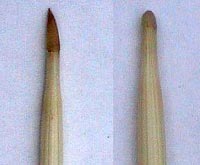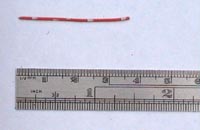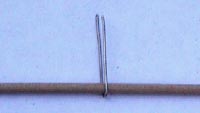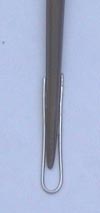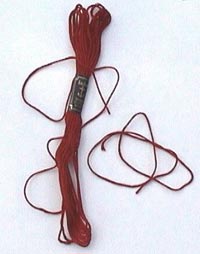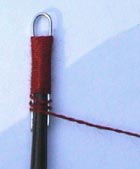| Make your own Floats – Part 1
Tackle making seems to be something of a lost art in today’s modern throwaway society. A mere twenty years ago it was considered quite normal to make up a batch of hooklinks or floats during the close season. In the FISHINGmagic forums a number of people have asked about making floats. With this in mind I have written this article and a series of practical ‘workshops’ about my return to the simple pleasure of making floats. – Kevan Farmer Porcupine quill floats – the easiest of them all 1. The raw material, I get mine from Dave Havers at Tackle Bargains – www.tacklebargains.co.uk – but there could be other suppliers local to your area.
2. Porcupine quills are the easiest of all floats to make. The only requirements to the quill itself are a little sanding to the ends and a light smoothing over with fine grade steel wool. The steel wool itself can be obtained from either builder’s merchants or DIY shops very cheaply. I always take off the shiny exterior ‘coating’ on a quill in order for the paint and varnish to adhere properly in the later stages. Don’t get carried away though, it only seconds to cut back and that is all that is needed. When the quill is dull all over this stage is done. The two quills side by side show an unsanded root section on the left next to a cleaned up one.
3. For the float ring I use copper wire. I have some offcuts of telephone extension wire, which is copper with a tin – I think – plating. Brass wire can be used if preferred and is easily obtained from any model shop. Another alternative is nylon mono line in about an 8lb breaking strain. I have found in the past that mono is more difficult to use and is not as robust as wire. Of course it easy enough to dispense with a ring and use just a float rubber or length of silicone with a hole bored through which can also double up as a quick-change adaptor. If you do use wire I have found the optimum length to be around 1.5 inches. Be careful how you strip the plastic insulation off. Any nicks on the wire will quickly snag and damage main line or hooklengths.
4. Bend the wire around a wooden or plastic former, not metal pliers, as again they will damage the wire. Copper or brass wire is soft and will easily bend around a cocktail stick or piece of cane. If you have any doubts about the wire discard it and use another piece.
5. I have found that the easiest way of fixing the newly formed ring onto the float itself is to start by making sure the wire is flush to the sides of the stem. I then dab the merest drop of superglue onto the wire while holding it in place. I now tend to use a cocktail stick to deposit the glue in place as I have rather large fingers and have found myself glued to a few floats in the past. Give the glue 10 minutes or so to dry.quill8.jpg
6. Now, possibly, the most difficult part – whipping. I always use cotton embroidery thread. I have found genuine silk but it is a bit more expensive and I honestly don’t think it makes any difference to the finished article. Colour is a matter of personal choice and is one of the great aspects of making your own floats; you don’t have to have black. I usually use either red or yellow but if you wished to keep in vogue you could always use a mossy green or bark brown to give the camouflaged look.
7. From the main hank of thread cut a length about 15 to 16 inches long. This will then separate out into about 6 distinct strands. Run one of these separated strands through your fingers to take out any kinks or twists.
8. Lay one end of a strand along the base of the float. Again using a cocktail stick place the merest dab of superglue along side it. Let this dry for 10 minutes. Don’t try to carry on until the glue has dried otherwise the thread will stiffen up and cosmetically spoil the whipping.
9. Now, very carefully start to whip the thread up the stem of the float. After the first 3 turns it should be possible to tighten it up a touch. Too much pressure to start with will pull the tail of the thread away from the stem.
10. At around |
Welcome!Log into your account











